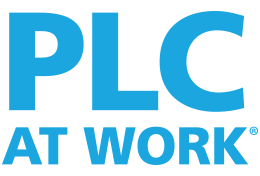DEMOGRAPHICS
Southeast Polk is a community of communities. Located in the vibrant metro area of Des Moines, Iowa, the district serves over 7,000 preK–12 students and is the 13th largest public school district in Iowa. The district covers 114 square miles and serves multiple communities. Southeast Polk consists of one high school, one junior high school, one sixth-grade center, and eight elementary schools. Follow Southeast Polk Community School District on Twitter @SEPSchools.
7,141 Students
- 28.5% free and reduced lunch
- 2.5% limited English proficient
- 9.8% Special education
Southeast Polk Community School District's CHALLENGE
Southeast Polk is a unique district in that it serves several towns with a wide range of demographics and socioeconomic diversity. Dr. Jo Ellen Latham, director of curriculum and instruction, considers this both an asset and a challenge. Dr. Latham shared that the most important thing to the committed educators throughout this district is to make sure each and every student, no matter where they live or what their challenges may be, have equitable access to quality curriculum and instruction and receive the right support to help them grow and succeed. To support staff in this work, district leadership chose to implement the Professional Learning Communities at Work® process.
“Implementing PLC at Work districtwide definitely helped us through the pandemic. Having our collaborative teams in place held us together. Our process and our focus kept us anchored, and our work as a PLC will sustain us as we continue recovery.”
IMPLEMENTATION
At first, only staff from one or two schools attended a PLC at Work Institute. Although they found the training meaningful, there was no immediate push to scale the work districtwide.
Four years later, Southeast Polk really dug into the work of implementation as a district, and this is when the correlation between PLC implementation and student achievement became noticeable. The schools that really made strides in becoming a high-functioning PLC showed higher levels of student success. According to Dr. Latham, this correlation has remained consistent, even during the disruption caused by COVID and the district’s continued recovery.
Southeast Polk began their process by clearly articulating what they wanted all students to know and be able to do. Starting with math and reading, leadership brought K–12 teams together to reach consensus on how they would make decisions about priority and supporting standards. As each grade level prioritized standards, vertical conversations were taking place to look for gaps and repetition in learning progressions.
After identifying priority and supporting standards at the K–12 level, teams in each grade bundled the standards into units of study. The next step was to create assessments designed to measure the priority standards for each unit. These were written in a pre/post-test format, with a data management system in place to efficiently provide information for teams as well as study trends and patterns at the system level. This same protocol was applied to develop curriculum for science, social studies, business, and world language classes.
Leadership continued to invest in professional learning to support their staff, sending teams from each school to PLC at Work Institutes. “The response to this first institute was tremendous, and we quickly realized how this ongoing training would positively impact our implementation and further advance the work to support gains in student achievement,” recalled Dr. Latham. District leadership also purchased Global PD Teams to strengthen their learning and participate in job-embedded professional development.
As teams studied their data, trends and patterns emerged. Stronger core instruction meant that teachers were able to better target the needs of students who were not yet meeting the standards. When teams from different buildings realized success on certain standards, they shared instructional strategies that had the most impact on student learning. Vertical teams further articulated pathways for learning and growth across grade levels. This led to the development of a multitiered system of supports. Teacher teams identified students who needed intervention or enrichment and collaborated on high-yield strategies to target the needs of individuals and small groups of students.
RESULTS
Mitchellville Elementary School serves a large population of students who qualify for free and reduced fees. It is also now a Blue Ribbon School. After hearing Maria Nielsen share the 15-Day Challenge at a PLC at Work Institute, the school rose to become the number one elementary school in the state based on state performance profiles. The district now plans to scale up the 15-Day Challenge, which requires teachers to focus on the four critical questions of a PLC as they plan their units of study, to other schools across the district.
Other noteworthy achievements:
- All elementary data points on statewide summative assessments exceeded the state average in the past school year, indicating signs of a rebound from disrupted learning.
- Grades 6–8 exceeded the state average in measures of English language arts, math, and science.
- The achievement gap in seventh- and eighth-grade math for students receiving free and reduced lunch narrowed by 14 percentage points.
- Eighth-grade English language arts has shown three years of continuous growth in achievement.
- Student participation in the Advanced Placement (AP) exam increased by five percentage points.
- The AP exam passing rate was 85% compared to 61% for the state of Iowa and 58% at the nationwide level.
Early Literacy Data Percent Meeting Benchmark
Early Math Data Percent Meeting Benchmark
WHY PLC AT WORK®?
Professional learning communities (PLCs) are schools that empower educators to work collaboratively in recurring cycles of collective inquiry and action research to achieve better results for the students they serve.


